Thru Hiker Interview
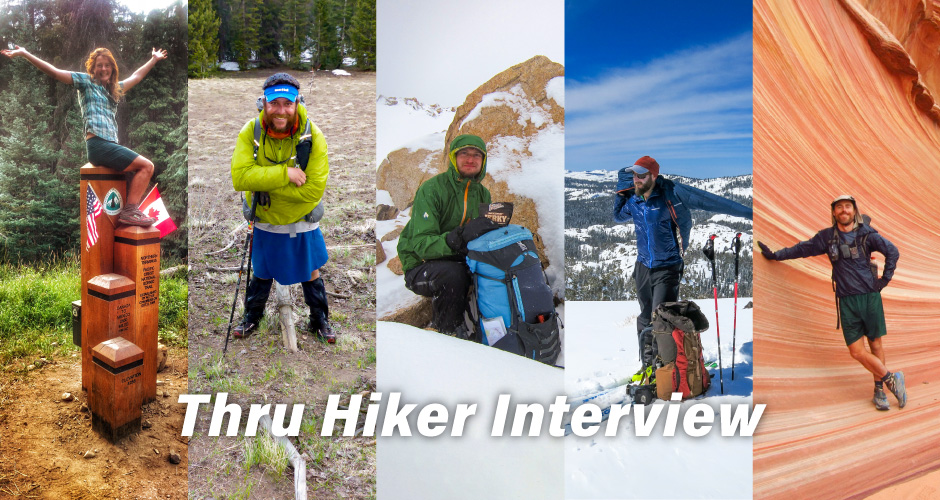


HEATHER "ANISH" ANDERSON
Heather is the only female to complete the “Triple Triple Crown”–completing the Appalachian, Pacific Crest and Continental Divide National Scenic Trails each three times as well as the first female to complete the Calendar Year Triple Crown.

WHITNEY "ALLGOOD" LARUFFA
Whitney worked on the Appalachian Trail in the 1990’s as Ridge Runners after their thru-hike, where they provided education and support to a variety of trail users.

JUSTIN "TRAUMA" LICHTER
Justin Trauma Lichter and hiking partner Sean Pepper Forry completed the 2,600 mile winter thru-hike of the Pacific Crest Trail in 132 days in a variety of weather conditions.

SHAWN "PEPPER" FORRY
Having completed the Triple Crown of hiking, Shawn Forry has continued to redefine the limitations of ultralight travel, having logged more than 25,000mi of wilderness experience.

CAM "SWAMI" HONAN
Described by Backpacker Magazine as "the most traveled hiker on earth”, Cam “Swami” Honan has trekked in 61 countries across six continents, logging more than 100,000 km (62,100 mi) over the last three decades.



Appalachian Trail 2003


In March of 1996 I set off North Bound on my first thru-hike, it was the famous Appalachian Trail.


My first thru-hike was in 2003 on the Appalachian Trail and International Appalachian Trail.


Appalachian Trail in 2003, NOBO Georgia to Maine


The Alpine Pass Route across Switzerland in 1997.


Many! 9 individal thru-hikes of 100 miles or more + 2 additional thru-hikes of the AT, PCT, and CDT each (for a total of 3 complete Triple Crown completions and 15 total thru-hikes). I've logged north of 40k footmiles in my lifetime.


10 that are right at 100miles or more, and pile of shorter hikes in the 35-75 mile range


I’m not sure. I don’t really track or add it all up but probably over 45,000 miles.


To date I have completed roughly 25,000 miles via 21 trails or routes as a thru-hike, 4 routes as a thru-ski, and 3 routes as a bikepacking thru-ride.


It's really difficult to name favorites, since no hike is the same, even repeats of the same trail.


That is sort of like asking a parent if they have a favorite child, each hike holds a special place in my heart and was usually the exact thing I needed in my life at the time. My favorite would probably be the ODT, I hiked this "trail" (it's really route) in the fall of 2018. My body felt great during the hike, I was able to do the miles I wanted, but mostly it was the vast remote expanse of eastern Oregon that I loved. The trail had a lot of unique and diverse environments and the sky was the darkest I have ever seen. You could open your eyes in the middle of the night and be able to see the desert around you illuminated by starlight. It's a phenomenal experience and honor to hike that trail.


They’re all different and have different scenery, weather, challenges, and memories. It is hard to pinpoint a specific favorite.


The Great Himalaya Trail stands out in terms of the grandeur of the route and cumulative undertaking. Piecing together a largely undefined route, in a foreign country, not knowing the language, via a traditional thru-hiking style, using 1:250,000 scale maps and yet completing in under 60 days still fogs my mind to the good times when reminiscing on the mental and physical challenges that were overcome.
Obviously completing the first winter trek of the Pacific Crest Trail stands proud in terms of the sheer audacity. Concisely, it was a culmination of all prior endeavors to revisit a familiar trail, in a new season, that demanded competency in three disciplines (skiing, snowshoeing, hiking), all shadowed under the umbrella of doubt and sheer will of the human experience.


No specific favorites. That said, over the years there are certain regions that have stood out, such as the Karakoram, Southwest Tasmania, High Sierra, Canadian Rockies, Tibetan Plateau, and Central Andes.


Since 2018 when I completed my Calendar Year triple Crown, I've been focused on shorter thru-hikes, checking off State Highpoints, and working my way through a prominence peak list. I've also tried my hand at bikepacking. With the pandemic, these have all been great, safe ways to continue exploring.


Blue Mountains Trail in NE Oregon, this trail is being developed by the Greater Hells Canyon Council and in 2022 I was part of a group of 3 who completed the first thru-hike of the trail. It was very challenging as we were the first people to ground-truth what was on paper, and it presented us with some substantial challenges along the way.


Last summer (2021) Pepper and I bikepacked the Colorado Trail.


The summer of 2021 I was able to get out for 2 weeks to complete a thru-ride of the 500mi Colorado Trail. It was fun to revisit the trail corridor for the first time since setting the Fastest Known Time back in 2012 and to be moving ‘slower’ by bike. The bike route shares similar tread with the hiking route for about half of the ride and we were able to see some new places during the wilderness bypasses.


The last long treks I did were in Alaska’s Denali and Gates of the Arctic National Parks in the summer of 2021.


This summer, barring travel restrictions due to the pandemic, I plan to go to Scotland and begin working on completing the Munro peakbagging list. Closer to home, I'm at 43 state highpoints, so I aim to complete that project in the next 5 years.


Right now I am trying to decide what I am going to go hike this fall, I have it narrowed down to The Arizona Trail, the Colorado Trail, or the Northern New Mexico Loop. All 3 trails are high on my "want to hike" list and they all fit in well to the amount of time I can be away from my job. I am also planning on some international hiking in 2023, given we can freely travel to some of the places I am planning to visit.


I always have some dreams and ideas that I’m noodling around. I let them simmer and think about preliminary planning items and then see which ones rise to the top and pique my interest most. I have no firm plans at the moment.


Bikepacking has been a recent new interest that has placed me back in the learner’s mindset. The last few years I have completed routes along the Tahoe Rim Trail, Arizona Trail and Colorado Trail. The summer/fall of 2022 Trauma and I are looking at completing the Oregon Timber Trail which is a ~700mi ride through Oregon.
The planning process to complete other long distance trails during the winter time keeps me busy on long winter nights.
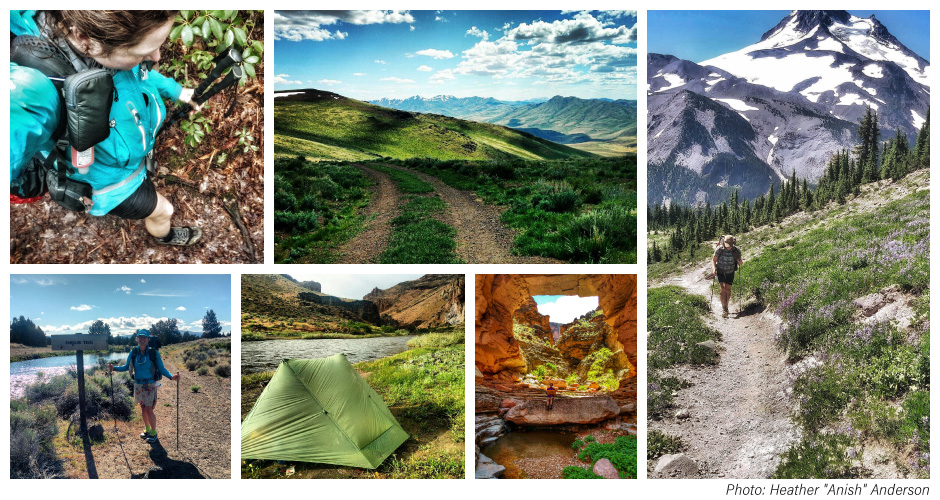


I was 20 years old and looking for a "grand adventure" to get me out of the "boring" midwest where I'd grown up.


I grew up in NH and was very active in scouting. On one of my first trips we went hiking up in the White Mountains and I learned about the Appalachian Trail. I had always loved walking in the woods for as long as I can remember and the thought that I could walk from Georgia all the way to Maine, was mind-blowing. I knew right away that I wanted to thru-hike the trail, and I didn't even know thru-hiking was a thing. I worked out a deal with my folks that if I could graduate high school early and still attend a college that fall I could go. I had to work hard to structure my class load in high school to graduate early and it was even harder given that I was working that whole time to save up and pay for my hike.


I had done an outdoor education program in college where we spent 2.5 months backpacking around southern Utah. I had really enjoyed that program so thru-hiking seemed like a good way to continue to spend more time outdoors.


I don’t recall the exact moment of when I decided I wanted to hike the Appalachian Trail, but once the thought entered my brain I was totally transfixed. Looking back I was ready for something big at that point in my life, ready to escape the small town mindset and opportunities. American culture tends to lack a ‘rite of passage’ of sorts, and a grand adventure of this nature filled that void perfectly.


The Swiss Alps was a place I’d long dreamed of visiting. I couldn’t think of a better way to experience it than to walk across.


I was a new hiker when I started and surprisingly, I fell madly in love with hiking. The sheer joy and sense of wholeness I felt out there was sufficient motivation not only to complete my first thru-hike, but devote my entire life to it.


The motivation for me was to finish at all costs, it was my first time away from home at 18, and I was so motivated to complete that hike I never once thought about not finishing. When time got hard I would just chant to myself over and over, "Katahdin, Katahdin, Katahdin..."


I always like to see new places and see what’s around the next bend. It was a great way not to have to go out and back on an hike and just keep going wandering to see what’s around the next corner.


Surprisingly I never struggled with motivation at all on my first long distance thru-hike. Fleeting moments of missing home and/or people, but they were always passing. I always felt those moments were great opportunities to reflect on the things you value, appreciate and take for granted. The newness of every bend in the trail was such an intoxicating source of (re)motivation.


Hiking is something I’ve loved since I was a kid. Irrespective of the time, distance or conditions, I’ve never required any more motivation than that.


I struggled most with the learning curve. I didn't know what I was doing, had all the wrong gear, and was a broke college graduate to boot. I learned to make do with less, and be comfortable in discomfort. That has served me well on trail and off. I think a lot of my peers struggled with boredom and the physical toll of the hike.


The weight of my pack for sure. It was the mid-1990's and gear was heavy. I struggled early on with realizing what I needed and what I didn't, but after a month or so I managed to get rid of the fluff and pair my gear down to what I needed and used regularly. I would say most others struggled with the same. The one thing I do remember being our biggest mental challenge was always being cold and wet, 1996 was one of the wettest years to date in recorded history at the time and we felt the brunt of it. Even today when I think back to my days on the AT I remember being in rain gear and cold more than any sunny hot days that year.


At that time there was less information available about thru-hiking. I think everyone struggled initially with the weight of their packs and many people struggled with blisters and foot care issues. 2003 was a very wet year on the Appalachian Trail. Since I had experience backpacking, I was a bit more prepared in terms of extraneous gear but I didn’t have a viable resupply strategy. I did what I had done previously in Utah, which was much more remote. We carried 10-14 days of food at a time with packs weighing 50-60 pounds because of the food weight. On the Appalachian Trail I started with the same strategy and tried to minimize time in town, I learned over the first few weeks when we were crossing roads everyday or multiple times a day that my strategy should shift. I then increased the frequency of my resupplies to once every 2-4 days and started swapping out additional gear for lighter weight pieces. I reduced my pack weight significantly.


2003 was one of the rainiest years to thru-hike the Appalachian Trail. I can count more days than not tripping on slick rocks and crossing into sleeping bags with damp clothes on. Nothing dried out fully that year! Luckily(?), being mine and many others first thru-hike we didn’t have anything to compare it to so it all felt ‘normal’. Commiserating through laughter in the shelters at night at yet another rainy day helped to raise the spirits.
Motivation to continue is ever-present on any thru-hike. I saw many peers struggling with that throughout the hike.


I can’t say I struggled with anything. If you’re physically prepared, have the requisite skills and experience, and most of all, unconditionally enjoy being out there, even the crappy moments usually aren’t that bad. In fact, more often than not, they’re the times you learn the most from.
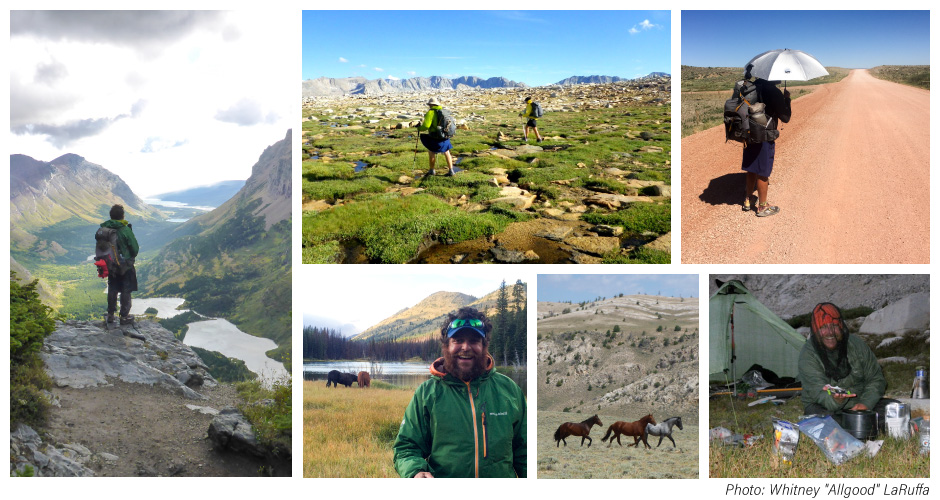


It was easy for me to hike all day every day without many breaks, My peers probably found community easy, but I was a loner so I don't know! It seemed like most people hiked in loose groups most of the time.


I think getting into the rhythm of the trail came really easy for me and my fellow hikers. Not having the distraction of modern technology then, really allowed us early on to get in the natural rhythm of nature and unplug from society into a nice bubble of thru-hiking. Also once we figured out we could hike a 20-mile day that changed everything for us on making miles to get done before my return date to college, my partners and I figured out early on that we loved hiking longer days and also camping along the trail as opposed to using the shelters on the AT all the time.


There’s a learning curve for everything new — from how much to hike in a day, what’s sustainable day after day, to what food you’re going to be able to eat without getting tired of. The easiest part of my first thru-hike was probably bonding with the other hikers. While there’s a lot of different people out there with different backgrounds, everyone is in the same boat out there trying to figure things out and out there for similar goals. It makes it easy to talk to people and create lasting friendships.


You’ll find a unique answer to what a hiker finds ‘easy’ to every hiker you ask! For me, the commitment to continue came the easiest. I can’t recall a single day in which I thought about wanting to be anywhere else except ticking miles along along the Appalachian Trail. The comradery came easy. Once I found the gear and footwear that worked for me, the miles began to feel easy. The logistics, even in a primitive internet era, came easy with enough patience. Then again, hindsight memory is always rosy ;) The perpetual outlook of a chronic thru-hiker!


For all of your detailed plans to go out the window!


The fact that after a few weeks your body will be trail hardened and ready to go but the mental game can be harder for some. Thru-hiking is awesome, but some people feel like it gets monotonous day after day, so be ready for that. The biggest piece of advice I would give them is to save up a good nest egg of money for on the trail and afterward. A hike generally will cost you about $1100/month while hiking in lodging, meals in town, and maybe replacing things as they wear out like shoes and socks. When the hike is over many have a hard time adjusting back to life and work, so having a good nest egg to soften the landing and let you explore your next step in life can really help reduce your stress when you return from your hike.


Steady cold rain. Cold rain is probably one of the hardest weather things to prepare for mentally and by layering and dressing right. Putting on wet clothes the next day is equally unpleasant and all part of a long rainstorm.


Expect the unexpected! Start with a plan and then immediately toss it out the window on day 1. Rolling with resistance towards limitless flexibility. The mental aspect is the piece that catches most first time hikers off guard. Things that all hikers confront at some point on a hike are; missing life events, missing loved ones, looming deadlines to return to work/school, managing a budget, and most importantly, the desire and motivation to keep pushing through the darkest of days. If you have a plan in place before the hike on how you’ll reframe these thoughts in your mind when they bubble up, it can greatly expedite your mental recovery towards positive vibes.


Scouring online forums, reading motivational books, and doing gear shakedowns can all help you prepare for your first thru-hike. However, in the big picture, none of it counts for squat if you don’t enjoy spending time in the woods. Before embarking on your maiden long-distance trek, spend as much time backpacking in different conditions as possible. Overnighters, long weekends, week-long excursions; whatever you can manage. Many newbies have rocked up to the start of a thru-hike with romantic visions of communing with nature, only to find out that hiking and camping for an extended period in all types of weather isn’t for them.
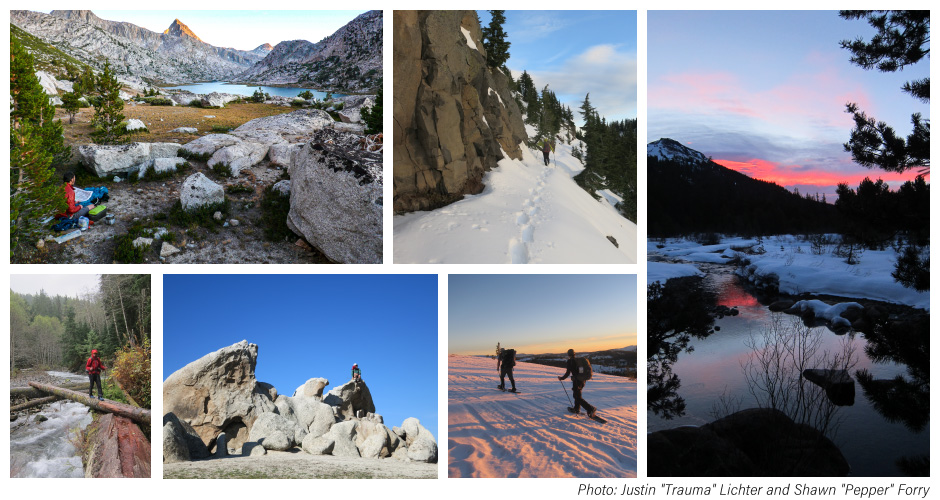


I think it's important to balance belief in yourself after finishing a hike, with the hubris of believing you're now an expert. Remaining open to learning, especially in new terrain is crucial.


I think second-time thru-hikers need to make sure to check their ego at the beginning of the next trail. Each trail is unique and presents its own set of challenges, and has its own feel and culture. A hike on the CDT requires a different set of skills than a hike on the AT, and be going in with the mindset to stay humble and learn as much as you can while out there will go a long way in one's success. Sure having done a previous thru-hike is a huge advantage in some respects as you know you can do it, you have an idea of what the highs and lows are going to be like. It's a double edge sword too, it can also set you up for the next hike to not to meet your expectations. I saw this at times on the CDT, hikers who had the year before done the AT or PCT were expecting to have the same social experience on the CDT, hanging in large groups of hikers, trail angels all around to help them when needed, and were then very disappointed when they realized that hikers were few and far between and the resources for hikers were slim pickings.


Depends if you are setting out on the same trail. I have done the same trails over and typically if you have done it before you can do it again, as long as you’re mentally excited and prepared for it. I try not to repeat trails unless it’s in a different season or has some other challenges. I don’t think it’s necessarily the case that if you’ve completed one thru-hike you can complete all of them. Each trail or area inherently has its own challenges, whether it’s weather or terrain, which often leads to a sequence of skill building and some new challenges as someone thru-hikes additional trails or locations.


Success isn’t guaranteed! Even if you’re re-hiking the same trail, things will be different; weather, people, set backs, conditions, etc. The ‘spark’ that motivated you during the first hike may be dim or fleeting. The group of friends that you became so close with may or may not materialize. Everyone starts back at Mile 1.


While certain gear and logistical elements will carry over, there is often a big discrepancy in terrain and weather conditions from one thru-hike to another. By all means apply what you’ve learned, however, never take anything for granted, and do your best to accept and adapt to each situation on its own merits. The old saying, “assumption is the mother of all mistakes”, is never more true than in the wilderness.


As much as blogs and other resources want you to believe this, gear is not going to make or break your hike (on its own). It's important to have a sleeping bag that keeps you warm, a pack that holds up to the trail, a shelter to protect you and clothing to thermoregulate. However, it's not essential to have the lightest, most expensive, cutting edge gear. It's better to stay within your budget as you experiment with what works and what doesn't and upgrade over time once you know what you want and need. It's crucial to have shoes and a pack that are comfortable or your experience will be miserable. You can deal with a lot of discomfort in other arenas and still be fine.


I would start by doing some backpacking trips prior to gearing up for a thru-hike, maybe borrowing or renting some gear and getting an idea of what is going to work for you. Maybe you prefer a tent over a hammock even though you watched 7 videos about how a great hammock is. Getting an idea of what you like and do not like can really help you with gear choices before you go. Also, set a budget for gear and set some extra money aside for potential replacements along the way. Then it really is a matter of how much you want to spend and how light can you go. The general rule has been the lighter the gear is the more it costs, but these days ultra-light gear is much more prevalent and more affordable. I would suggest finding the right balance of weight and durability, maybe you don't need to spend $600+ on a Dyneema tent when you could buy a sil-nylon one for $250 and only pay a penalty by having a slightly heavier tent. I think for each person finding the right gear that works for them to be comfortable and enjoy their hike is the best thing for them. I know as I have gotten older I have started to carry some extra comfort items for sleeping like a pillow, while it does cost me weight, I sleep so much better and gain so much strength for the next day, the slight weight penalty is worth it to me.


The three things I think are most important are 1) weight, 2) quality/durability, and 3) how the layering system or equipment pieces functions together as a system.


The biggest advice is to just get out there and do it. Reframe all the reasons in your mind on why you can’t do it into solutions on why you must do it. Knowing ‘how’ to use your gear, its intended use and limitations is arguably more vital to success than ‘what’ you take for gear. There are infinite gear lists to be found online for people who have successfully completed a similar trek to use as a starting basis. It’s always much better to start with more durable (re: heavier) gear to learn with than solely counting grams.


Backpacking gear is just a means to an end. And that end is to have a safe, enjoyable, and comfortable(ish) experience in the wilderness. With that in mind, I look for five main attributes in my outdoor gear: simplicity, functionality, durability, lightweight, and value for money.
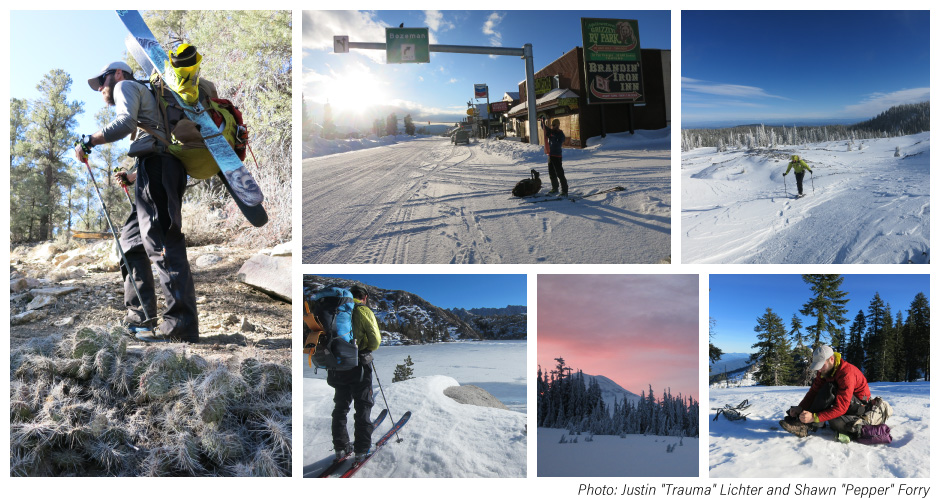


I chose inexpensive and thrifted clothing for my everyday hiking clothes and invested in the insulating and waterproof layers as well as footwear. The things that matter for keeping you alive and hiking! Your everyday clothes will likely be destroyed no matter what, so not spending a lot on them makes sense. Lesser used items will last longer. The same goes for gear, my backpack is always a durable choice, even if it's a bit heavier, and I choose models with removable frames so I can wash it in town with my laundry. This keeps zippers and fabric from wearing out with grime accumulation. My shelter is a lot more delicate, but it's only used at night and doesn't get abrasion so it's not as vulnerable. At the end of the trip I clean everything and make repairs so that things can be used again.


I try to treat my gear gently when I can, ultralight gear does require a more delicate touch to last a long time out there. I find that not throwing my pack down, sitting on it, or abusing it just a few ways to help preserve my gear. Certain items have to be considered a one-thru-hike item like a groundsheet, socks, maybe even a wind shirt, and the clothes you hike in each day. On trail having some basic sewing skills and carrying a needle, dental floss, and thread is a great way to do in-field repairs. I also recommend carrying tenacious tape, and a few other bits and pare parts to do in-field repairs to help your gear last longer.


I think you can do a lot while using the gear to try to prevent damage. It is helpful to be aware of what you are doing and how it effects your gear. If something happens, which is inevitable on a long trip, I typically try to make field repairs quickly when something happens. This prevents materials from ripping further or putting any unnecessary stress on seams.


In addition to understanding the intent and limitation to ultralight gear, on-trail preventative care is the most important factor to extend the life of gear and clothing. Things that I have found success in are not using my backpack as sit pads, rarely hiking in my insulative layer and never in my down puffy, and being selective on campsite locations, always thoroughly scanning the ground for sharp/pokey things.


I’ve never babied my gear, but I am diligent about doing the little things. Examples would include cleaning and drying shelters before storing them, washing my sleeping quilts/bags after a season of regular use, and sewing up tears and rips before they become larger.


See my answer to the previous question. Also, I wash my sleeping bag at the end of a thru-hike (or end of a season of heavy use). The same goes for my tent, groundsheet, and everything else. On trail I carry tenacious tape to repair holes or tears.


I try to wash my backpack more than any other piece of gear. I have found over the years that my pack lasts much longer when washed, also I find that getting the salt and grime off the back of the pack that goes against my back will help prevent sores and chaffing. I try to wash my socks daily in a ziplock with water to help keep them cleaner and remove grit, this really helps with reducing foot issues like blisters. I wish I could say I wash my sleeping bag a few times on a hike, but alas I do not. On the CDT I had intented on washing my bag before going into Grizzly country, but it never happened. So it was 5 months and 2800+ miles of not washing my quilt. I try to wash my down bags about every 500-800 miles of use when I am home or on shorter hikes.
I think it's important to maintain your gear as best you can on a thru-hike, this helps your gear last longer and avoid failures out on the trail. One, in particular, I am good about is cleaning and lubricating the zippers on my tent and jackets. An old toothbrush is great for getting in and cleaning the teeth of the zipper coil, then zipper lube afterward to keep them working well. In a pinch, I have used chapstick to lubricate my zippers and it has worked fine for me over the years.


I clean my clothing fairly regularly, even if just dipping and rinsing my shirt out in a creek (no soap). My sleeping bags don’t get washed very often but sometimes I’ll put them in the dryer for a little bit when in town. I like that crispy dry feeling. I also try to wear my rain jacket as little as possible when wearing my backpack. If I need an extra layer to stay warm I’ll wear it or if it starts raining but the rain jacket is usually the last layer I’ll throw on when I have a pack on. This helps the waterproofing last longer for when I really need it.


Foot care is always paramount for me. Whenever possible, in addition to religiously removing dirt and debris from my shoes and insoles at every trail break, I try to wash my socks out every night if near a water source. Trail clothes get a proper wash in every trail town. Lately I’ve been slowing my pace to enjoy more swims in alpine lakes so the hiking shirts tends to get washed a bit more frequently. I tend to only wash my sleeping bag at the end of a long trek, and even then it might go multiple treks before they get a proper wash ;)



Overall I tend to choose natural fibers for my clothing (wool is a great choice) since they are more odor resistant. I also choose down for insulation because it's lighter, although I opt for a synthetic midlayer if I intend to hike in it a lot, since down is not as effective when it's wet. I am hard on gear, so I tend to choose more rugged and durable pieces. The tie breaker on all items is weight and when everything else is equal I choose the lighter option. The overall weight you carry can make a huge difference in enjoyment on a thru-hike.


I try to find clothing that is lightweight, can stand up to long-term use, and most of all dries quickly when wet. I personally try to take multiple thin layers of clothing and layer them as needed. I generally carry more synthetic fabrics over wool or down. In wet areas like the PNW I find these synthetics dry well and also perform great even when wet. I do love merino wool socks, but I have found that merino wool shirts wear out too quickly for my liking. Merino is a great choice but the user should expect to get holes in it faster than say a synthetic shirt.


Lightweight and durable, in a tested layering system that I know will work for a variety of weather conditions.


Fit, function, weight, and durability.


Gear wise, I love my Gossamer Gear tent and pack. Clothing wise, I adore my Montbell 1000 fill down and thermawrap jackets and the wickron hiking skirt.


My favorite piece of gear has to be my Katabatic Alsek Quilt, it was hand-sewn for me in CO at the time, and is cut short and wide for my body type. I have had it down to 7 degrees and it kept me warm, and its a just a great all-around 3 season quilt for thru-hiking.
My favorite piece of clothing would really be a toss-up between my Torrent Flyer and my Tachyon Windshirt. I use the wind shirt multiple times a day and it's so light and keeps me so warm it's an invaluable player in my kit. When the pooh hits the fan weatherwise, the Torrent Flyer is my hands-down go-to! I have had a pile of lightweight breathable jackets over the years and by far the Torrent Flyer is the best one I have ever had. It's light, breathes great, and holds up for a long-time, it is also the rain jacket I recommend to anyone when they ask me.


I really like the Montbell sleeping bags and Montbell insulation layers.


Double-sided maps printed at 1:36:000 scale, accurate mileage with trail notes, edges trimmed and neatly tucked in a waterproof, see-through case. The only close rival is the sensation on mile 2000 of a pair of new shoes and socks with freshly trimmed toenails. Priceless.


I’ve never had an outright favorite. Contenders would include Katabatic quilts, Mountain Laurel Designs Burn backpack, Brooks Cascadia and La Sportiva Ultra Raptor trail running shoes.


Alpine Pad, Plasma/Ignis jackets, Thermawrap jacket, wickron skirt, 100% super merino baselayers


Tachyon Parka, Torrent Flyer Jacket, Cool Hoodie, EX Light Down Anorak, and Wickron Cool Visor


It depends on the trip and climate I’m heading into but 1) sleeping bags, 2) down insulation layer, 3) synthetic insulation layers, 4) Tachyon wind jackets, 5) Tachyon wind pants


Plasma 1000 Alpine Down Parka, Tachyon Parka, UL Thermawrap, Peak Dry Shell, and all of the Down Sleeper Wrap sleeping bags.


In no particular order - Tachyon Parka wind shirt, Plasma 1000 down jacket, Chameece gloves, Super Merino Wool middleweight high neck shirt, and the Peak Dry Shell rain jacket.

Plasma1000 Series
-
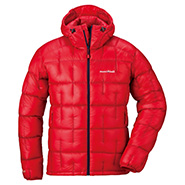
Plasma 1000 Alpine Down Parka Men's
Price: $479.00 -
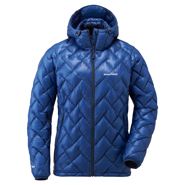
Plasma 1000 Alpine Down Parka Women's
Price: $479.00 -
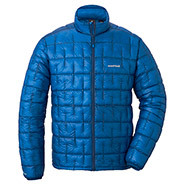
Plasma 1000 Down Jacket Men's
Price: $369.00 -
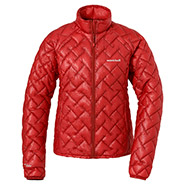
Plasma 1000 Down Jacket Women's
Price: $369.00 -

Plasma 1000 Down Vest Men's
Price: $279.00
U.L. Thermawrap Series
-

U.L. Thermawrap Parka Men's
Price: $219.00 -
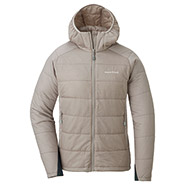
U.L. Thermawrap Parka Women's
Price: $219.00 -
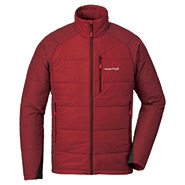
U.L. Thermawrap Jacket Men's
Price: $189.00 -
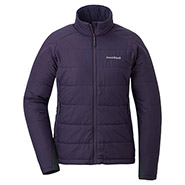
U.L. Thermawrap Jacket Women's
Price: $189.00 -
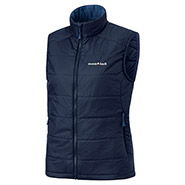
U.L. Thermawrap Vest Women's
Price: $139.00
Tachyon Series
-
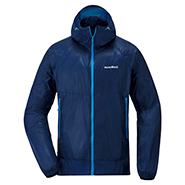
Tachyon Hooded Jacket Men's
Price: $139.00 -
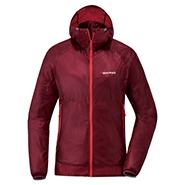
Tachyon Hooded Jacket Women's
Price: $139.00 -
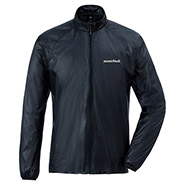
EX Light Wind Jacket Men's
Price: $129.00 -
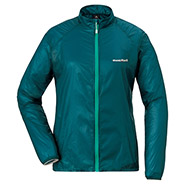
EX Light Wind Jacket Women's
Price: $129.00 -
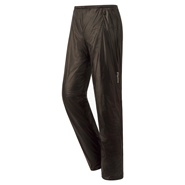
Tachyon Pants Men's
Price: $129.00
Rain Wear
-
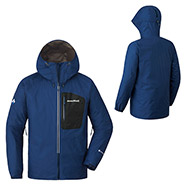
Torrent Flier Jacket Men's
Price: $299.00 -
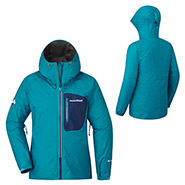
Torrent Flier Jacket Women's
Price: $299.00
Other
-
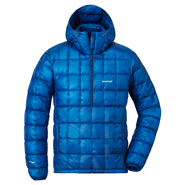
EX Light Down Anorak
Price: $329.00 -
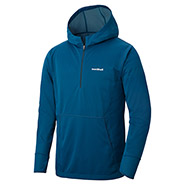
Cool Half-Zip Hoodie Men's
Price: $89.00 -
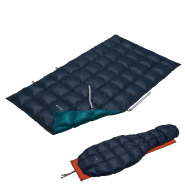
Down Sleeping Wrap #5
Price: $229.00 -
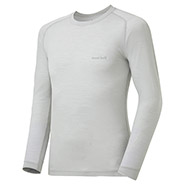
Super Merino Wool Light Weight Round Neck Shirt Men's
Price: $79.00 -
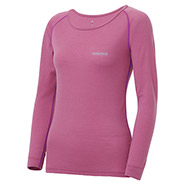
Super Merino Wool Middle Weight Round Neck Shirt Women's
Price: $89.00 -
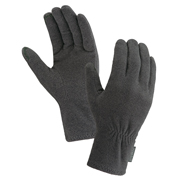
CHAMEECE Gloves Men's
Price: $22.00 -
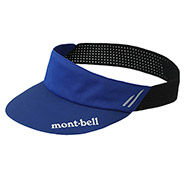
Wickron Cool Light Visor
Price: $33.00 -
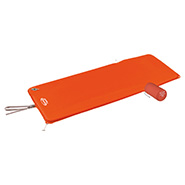
U.L. Comfort System Alpine Pad 25 120
Price: $120.00
